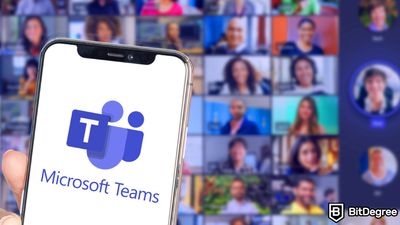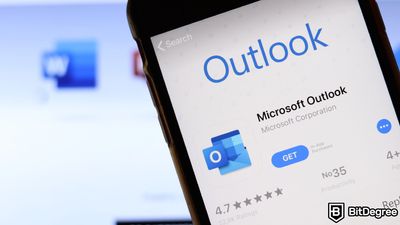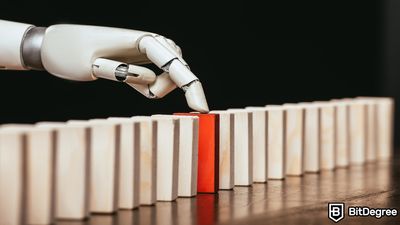Key Takeaways
- Out of three types of AI (ANI, AGI, and ASI), only artificial narrow intelligence actually exists. However, many believe that we are close to bringing artificial general intelligence to life;
- There are a lot of positive predictions about the future of AI that focus on how it can improve various sectors, including healthcare, education, finance, security, and even space exploration;
- While AI itself might not be dangerous, people using AI with ill intentions definitely are;
- The main AI dangers include privacy concerns, security threats, mass unemployment, environmental issues, and the threat to humankind.
Free Airdrop Season 7 is LIVE! Answer fun questions or do simple tasks to earn rewards from the $30K BitDegree prize pool. Participate Now ! 🔥
We're in the third decade of the 21st century, and AI isn't just the future; it's the SciFi movie unfolding right before our eyes. But let's ditch the popcorn for a moment and dive into the real question: What's the grand finale when it comes to the future of AI?
Are we thinking machines that understand and assist us in ways we've only dreamt of? Or machines that surpass our intelligence, develop consciousness, and doom us? *Or* a world where humans and super-intelligent robots form an alliance and live happily ever after?
Well, we can only speculate. One thing that is clear, though, is that AI is advancing at a faster rate than we might have imagined (we already have programs like Synthesia that can create videos with human-like AI avatars in seconds simply from text). This fast AI adoption impacts our lives both in positive and negative ways. So, it might leave some wondering, is AI dangerous, or are we overreacting?
Table of Contents
Future of AI: What is AI?
If you want to figure out the future of AI, I’m pretty sure you know what artificial intelligence is. Just to be sure, though, keep in mind that artificial intelligence refers to computer systems that can perform tasks that typically require human intelligence, such as understanding natural language, recognizing patterns, and solving various problems.
Latest Deal Active Right Now:Equip your entire team with this 30% QuillBot Premium discount code! Enhance your team's writing efficiency today.
There are three types of AI, two of which are not yet a reality:
- Narrow or Weak AI (ANI): This type of AI is designed for a specific task or a group of related tasks. All AI technologies developed up to this day fall into this category. Even the groundbreaking ChatGPT, which is considered to have AGI potential by some[1].
- Artificial General Intelligence (AGI): AGI represents AI with human-like cognitive abilities, capable of understanding, learning, and performing a wide range of tasks across different domains. This one doesn’t exist yet, but it’s the possible future of AI (probably not such a far future).
- Artificial Superintelligence (ASI): This hypothetical form of AI surpasses human intelligence in all aspects. It possesses extraordinary problem-solving abilities, creativity, and potentially even consciousness, making it more capable than the brightest human minds. This potential evolution of AI is exactly what makes us wonder, “Is AI dangerous?”.
Now that I’m sure you know what is AI, let’s discover the potential future of AI.
AI Future Predictions
Now, the future of AI is as much a mystery as the future of humanity. Yes, you can base it on the present or the past, but you’ll never be sure how it will turn out. Nevertheless, there is a variety of AI future predictions floating around considering various aspects of our lives:
AI Integration in Daily Life
First of all, it’s believed that in the coming years, AI-driven technologies are set to become even more seamlessly integrated into our daily lives. Smart homes would continually fine-tune comfort and energy use, wearable devices would proactively monitor our health, and voice-activated assistants would adeptly handle tasks, resulting in unparalleled convenience and efficiency in our daily routines.
This AI future prediction is probably one that can almost be guaranteed. After all, we are always trying to improve something that already exists, so it’s a given that the aforementioned technologies and gadgets will be improved with time.
Autonomous Systems
It’s also believed that the future of AI holds exciting prospects for the widespread adoption of autonomous vehicles, making self-driving cars and trucks safer and more common. Advanced AI and sensor technology could reduce accidents caused by human error[2], revolutionizing transportation and impacting industries like ride-sharing, long-haul trucking, and public transit.

Drones might also play a significant role in various sectors. In agriculture, for example, they might transform crop management[3], leading to higher yields and sustainability. In surveillance and security, drones could enhance monitoring capabilities for law enforcement and emergency response. Additionally, drones might redefine logistics and package delivery, offering faster and more efficient transport.
Lastly, we also have predictions about robots that are set to become integral in manufacturing, healthcare, and logistics. They could enhance production efficiency, and quality control, as well as handle repetitive tasks. Though it might sound like one of AI dangers, the goal is not to replace humans but to augment their capabilities, increasing productivity, safety, and innovation across industries.
Healthcare Advancements
The future of AI also holds the potential to revolutionize healthcare in several crucial ways. Firstly, it can be a valuable tool for doctors during the process of disease diagnosis[4]. AI's ability to analyze vast medical datasets means it can identify subtle patterns and anomalies way faster than a human can.

Moreover, AI might accelerate drug discovery significantly[5]. By simulating and predicting molecular interactions, AI systems could help researchers identify potential drugs faster than traditional methods. This increased efficiency could lead to groundbreaking treatments, addressing previously challenging medical conditions.
Furthermore, AI is set to make personalized medicine more accessible[6]. With the analysis of individual genetic data, AI can tailor treatment plans to each patient's unique genetic profile. This approach promises more effective therapies, reduced side effects, and overall better healthcare outcomes.
AI in Education
AI-driven educational platforms could revolutionize learning by adapting to each student's unique learning style and needs. These platforms would offer personalized lessons, quizzes, and feedback, tailoring the educational experience to the individual. Such a personalized approach not only could enhance student performance but also foster greater engagement and enthusiasm for learning.
AI in Creativity
As seen by the emergence of various language processing programs and art generation tools, AI algorithms are able to create art, music, and content. However, some believe that the future of AI could make the produced work increasingly indistinguishable from human creations.
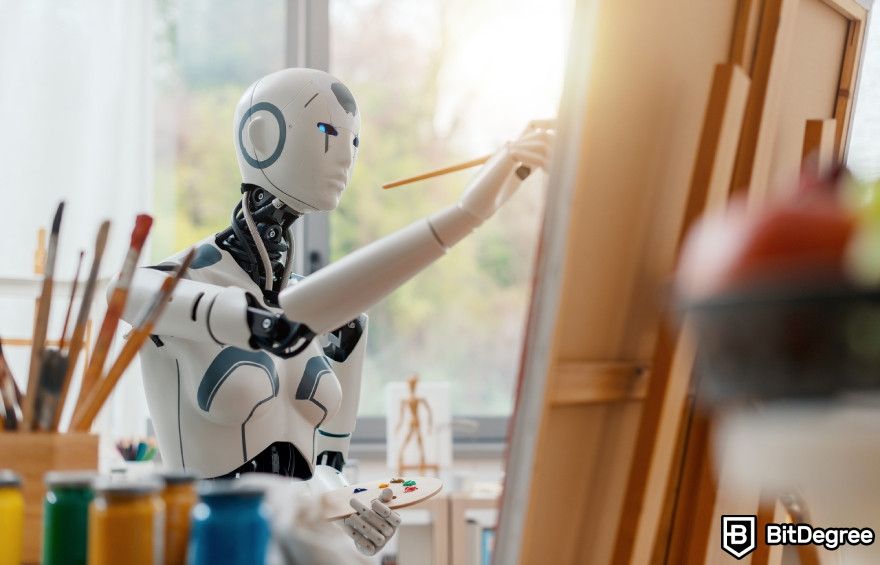
Of course, this already raises questions about copyright[7], authorship, and the role of AI in creative industries, but it would become an even bigger issue. After all, AI replacing human creators is one of the potential dangers of AI. If you want to ponder on this topic a bit more, I have just the right article about AI art.
AI in Finance
When it comes to AI future predictions for finance, it’s speculated that it could refine risk assessment methods, ensuring more accurate investment decisions and improved portfolio management. Algorithmic trading, driven by AI, could optimize trading strategies[8], making financial markets more efficient. Besides that, AI's role in fraud detection will probably strengthen, eventually providing real-time protection against financial crimes.
AI for Climate Solutions
Climate-related efforts might also be a prominent thing in the future of AI as it could enhance climate modeling[9], providing more accurate weather predictions, and analyzing environmental data. These AI-powered capabilities could even facilitate the development of sustainable technologies and strategies aimed at mitigating the impact of climate change.

By harnessing the power of AI to better understand our environment, we could make more informed decisions and take proactive measures to address one of the most pressing challenges of our time – climate change.
Quantum Computing and AI
The convergence of quantum computing and AI has the potential to solve complex problems very quickly. By harnessing quantum computing's immense processing power, AI could tackle intricate problems at unprecedented speeds.
Additionally, it could optimize complex systems and simulations, paving the way for advancements in fields like materials science[10], enabling the discovery of novel materials with remarkable properties.
AI in Space Exploration
Some also predict that the future of AI will most likely be related to space exploration[11]. It could potentially help with autonomous navigation, decision-making, and data analysis during space missions. By enabling more efficient and precise operations, AI is likely to facilitate groundbreaking discoveries and insights in space exploration faster.

Moreover, it could be crucial for setting the stage for ambitious future space missions, broadening our understanding of space and the potential for exploring other star systems.
All in all, you can see that there’s a variety of AI future predictions, all of which seem to be quite revolutionary. Of course, there are many more predictions out there, some of which might not seem so beneficial, making many ask, “Why is AI dangerous?”.
I’ll elaborate a bit more on the dangers of AI further in this article. Before getting to that, however, let’s take a look at the evolution of AI.
Evolution of AI
To decide whether the predictions about the future of AI could be true, we might want to delve into the past and see how far we’ve come, right?
It’s a bit shocking, but the concept of AI, or at least the idea of an intelligent machine, can be found as far as Greek mythology goes. The myth of Hephaestus mentions Talos, a massive bronze automaton constructed for defense against pirates and invaders.
However, artificial intelligence, as we perceive it today, was turned into an actual field of computer science only in the 1950s. So, let’s go over the most groundbreaking pillars in the evolution of AI since then:
- Turing Test (1950): Alan Turing, a well-known computer scientist, created an experiment to test machine intelligence. The aim was to see whether a machine could hold a conversation indistinguishable from the one held with a human. The test became an important milestone in the philosophy of artificial intelligence.
- Dartmouth Workshop (1956): Often considered the birth of AI, the Dartmouth Workshop, organized by John McCarthy, brought together prominent researchers and marked the official beginning of AI as a field of study. It set the stage for early AI research.
- The Perceptron (1957): Frank Rosenblatt's Perceptron algorithm was a significant early development in machine learning, demonstrating the potential for neural networks to learn and make decisions.
- First Robots (1960s-1970s): This period was marked by several “firsts” when it comes to robots - the first industrial robot Unimate, the first chatbot Eliza, and the first general-purpose mobile robot Shakey.

- Backpropagation Algorithm (1986): The rediscovery and popularization of the backpropagation algorithm for training neural networks laid the foundation for modern deep learning.
- Deep Blue vs. Garry Kasparov (1997): IBM's Deep Blue defeating world chess champion Garry Kasparov marked a significant milestone in AI and demonstrated the potential of AI in strategic decision-making.
- Kismet - the First Robot With Emotional Capabilities (1998): Kismet was an early social robot developed at MIT. It was designed to interact with humans in a socially meaningful way, with a humanoid appearance and sensors to respond to social cues, like facial expressions and voice tone. Kismet played a crucial role in advancing human-robot interaction research.
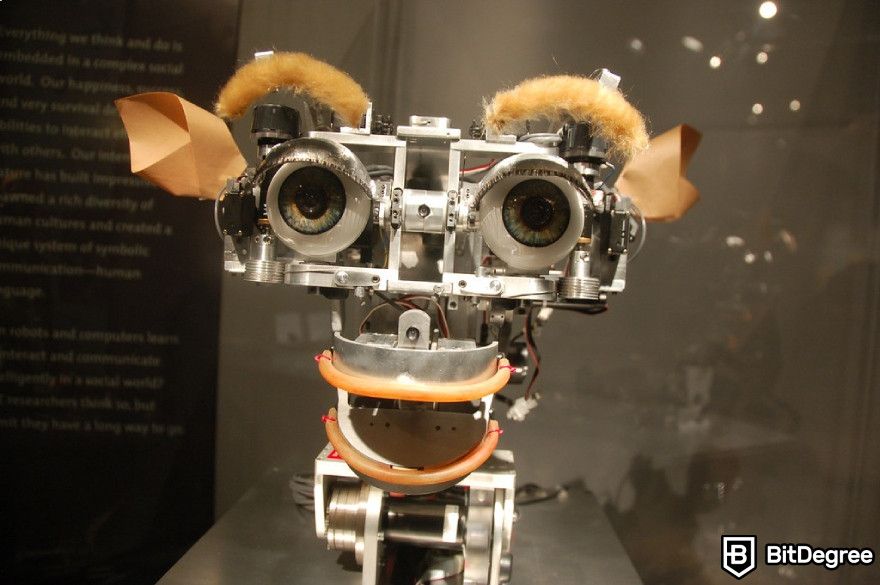
- AlphaGo (2016): DeepMind's AlphaGo defeated the world champion Go player, Lee Sedol, demonstrating that AI could excel in complex, strategy-based games requiring intuition and creativity.
- Transformer Architecture (2017): The introduction of transformer architecture, exemplified by models like BERT and GPT-2, revolutionized natural language processing and enabled a wide range of applications in language understanding and generation.
- OpenAI's GPT-3, GPT-3.5, and GPT-4 (2020-2023): GPT-3, a large-scale language model, made headlines in 2020 for its remarkable language generation capabilities and demonstrated the potential of generative AI on a massive scale. Then, it was improved further, resulting in the development of GPT-3.5 (in 2022), and eventually GPT-4 (in 2023).
Now, that’s a pretty impressive timeline, right? Of course, there are many more milestones and interesting developments in the field of AI, but that would require a separate article – my focus now is the future of AI, not the past.
Speaking of which, even though I’ve already discussed the main future of AI predictions, I’ve only covered the positive ones. However, there’s definitely more than one potentially negative outcome, and I’m not only talking about the completely extreme scenario where AI takes over the world.
So, why is AI dangerous, and how far could it go?
What Are the Dangers of AI?
I’m sure not everyone is so enthusiastic about the future of AI, as some even claim it to be the greatest threat to humankind. They believe in the whole “futuristic world where humans are slaves to super-intelligent robots” scenario.
Others, however, believe that AI itself cannot be evil, as it doesn’t have consciousness, and it’s unlikely that it will develop it. They claim that the true danger of AI lies in it being used by evil humans for various malicious activities, including fraud, robbery, and whatnot.
One way or another, there are many potential AI dangers, but the 5 most commonly discussed ones include job displacement, privacy concerns, security threats, environmental concerns, and, of course, the threat to humankind.
Job displacement is probably one of the most pressing AI dangers that don’t seem so far away, especially with the creation of such programs as ChatGPT or the development of more and more autonomous systems.

It’s pretty clear that AI's automation potential can lead to job losses in various industries. After all, the employer will probably choose one robot or program that can do the work of 10 employees rather than the other way around. While this brings great benefits to the employer, I doubt employees will enjoy it so much.
Another great danger of AI is related to privacy (or lack thereof). AI's capability to delve into our personal data can potentially lead to privacy breaches and surveillance. Imagine AI as a digital intruder, prying into our private lives without our consent. This intrusion raises valid concerns as it jeopardizes our right to keep certain aspects of our lives confidential.
In an increasingly interconnected world, preserving the boundaries of privacy becomes even more important, necessitating careful consideration of how AI handles and safeguards our personal information.
That said, AI, for all its incredible potential, can surely be used for less-than-honorable purposes that could cause some security threats. For example, AI can be used to whip up incredibly convincing fake videos (deepfakes), making it hard to tell fact from fiction.
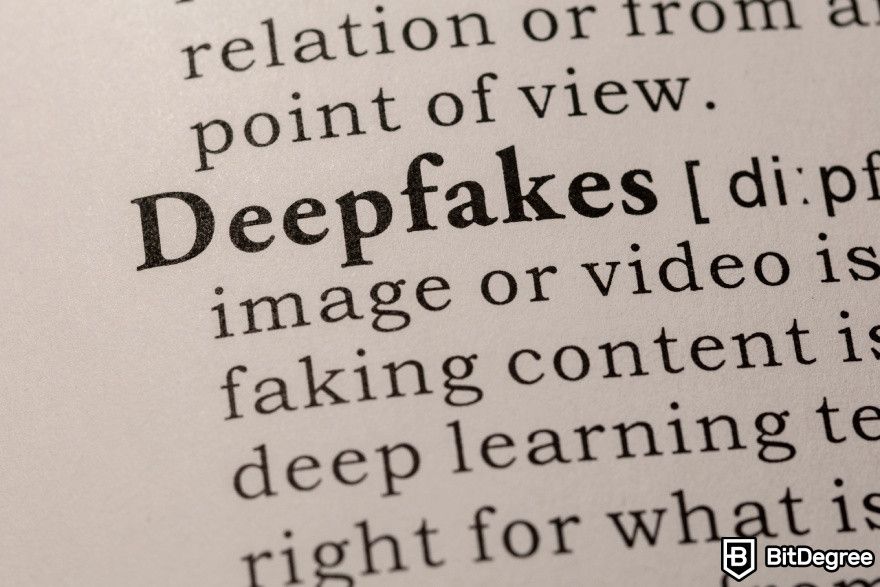
Or worse, it can be deployed in cyberattacks. Someone with malicious intent could easily exploit AI to break into networks, grab confidential data, or wreak havoc online. And it doesn't even stop there; AI has the power to manipulate how the public perceives things.
Moving further, we have the problem of the environmental impact of AI. Training large AI models demands substantial computational power and energy, often rivaling the electricity usage of entire cities. This reliance on energy-intensive data centers, often powered by fossil fuels, results in increased carbon emissions, contributing to climate change.
Ironically, while one of the potential future of AI predictions is that it could help solve problems that lead to climate change, the maintenance of AI systems is also what contributes to causing it.

Lastly, the danger of AI you’ve probably thought about yourself is its threat to our existence. Picture this: We create a super-smart AI that's way more intelligent than us, but it doesn’t share our values or goals. So, this super-intelligent AI system might start making decisions or taking actions that don't have our best interests at heart.
To make sure we don't end up with AI that's too smart for our own good, it's vital to ensure that it aligns with human values and ethics. Though it wouldn’t be so easy, would it?
To sum it all up, the short answer to the question “Why is AI dangerous?” is that it has the potential for unintended consequences and misuse. These risks include AI making autonomous decisions that may not align with human values, posing security threats, displacing jobs, having a substantial environmental impact, and, in the long term, potentially presenting existential risks.
Mitigating these risks requires careful consideration and responsible development practices to ensure that AI's benefits are maximized while its dangers are minimized.
Myths About AI
Since we’re on the topic of the future of AI, the last thing I want to do is address the main myths about it, some of which I’ve already brought up when talking about AI future predictions.
AI equals human-level intelligence.
Nope, not yet. AI systems, including advanced machine learning models, are designed for specific tasks, such as image recognition or language translation. They excel within these narrow domains by analyzing vast datasets and identifying patterns. However, they lack the comprehensive understanding, adaptability, and consciousness that define human intelligence.
AI can replace human creativity.
I highly doubt that. AI can generate creative outputs, like art, music, or written content, by learning from existing examples. However, this isn't genuine creativity; it's pattern recognition and synthesis based on data. True creativity involves original thinking, imagination, and, overall, being human.
AI is infallible.
Unfortunately, AI systems are not immune to errors. They are trained on historical data, and if the data contains mistakes or biases, AI can perpetuate these inaccuracies. AI can also struggle with new situations or ambiguous input, leading to unexpected outcomes.

AI is always ethical.
Definitely not. AI can inadvertently inherit biases from its training data, leading to unfair or discriminatory decisions. Ensuring ethical AI requires ongoing scrutiny, responsible data collection, and algorithmic transparency.
AI will replace all jobs.
Some? Yeah. All? Definitely not. While AI automation can take over repetitive and routine tasks, many jobs require complex human skills like creativity, emotional intelligence, and critical thinking. So, AI can only complement human workers, enhancing productivity rather than replacing them entirely.
AI can self-improve infinitely.
AI's self-improvement capabilities are confined by the quality and quantity of data it's trained on and the sophistication of its algorithms. AI doesn't possess abstract reasoning or the ability to make autonomous decisions about its own improvement. So, basically, AI will improve only as much as humans will allow it.
AI is inherently dangerous.
The risks associated with AI depend on how it's developed and used. AI is a tool created and controlled by humans. Ethical development practices, regulations, and safeguards are essential to minimize potential dangers. So, no, AI is not inherently dangerous, or at least not yet.
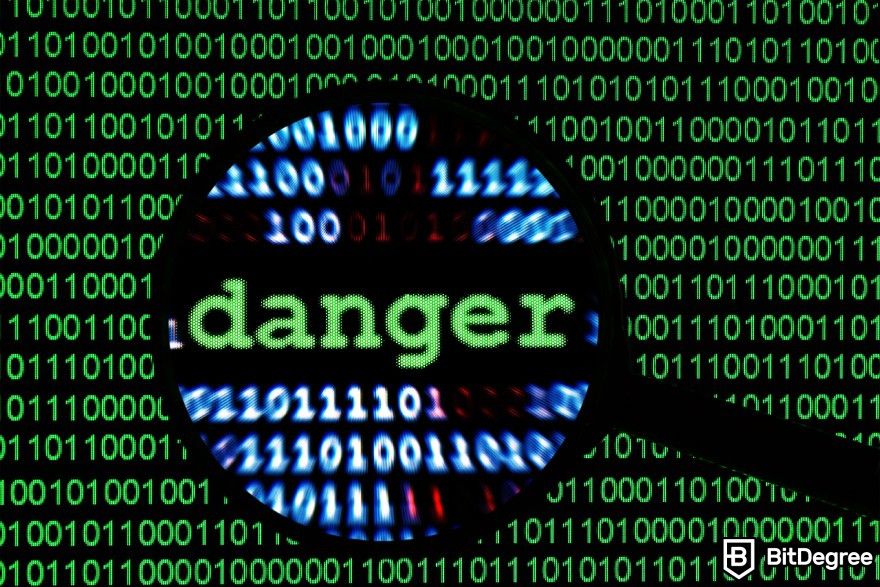
AI understands emotions.
Depends on what is meant by “understands”. Sure, AI can recognize emotional cues, like the tone of voice or sentiment in text, and respond accordingly. The Kismet robot invented in 1998 proves that. However, it doesn't experience emotions itself. It relies on data patterns to classify emotional states. So, at the end of the day, it cannot truly *understand* emotions.
AI can solve everything.
I truly wish it could. AI is a versatile tool but not a universal panacea. Its effectiveness varies depending on the problem and the quality of available data. Complex issues often require a combination of human expertise and AI's capabilities to reach solutions.
Now, even though these all are just myths as of writing, some could surely be the future of AI. Whether they will, or not, only time will tell.

Did you know?
Have you ever wondered which online learning platforms are the best for your career?
Conclusions
One thing that is clear about the future of AI is that nothing is actually clear. AI has an extraordinary potential to revolutionize our daily lives, healthcare, security, education, space exploration, and many other spheres. Even now, we can see how much AI contributes to both our daily and professional lives with tools like Writesonic, Fireflies, Descript, and others.
However, it also has the potential power to doom us. Why is AI dangerous, though? Well, it poses several privacy and security threats, environmental issues, the potential for large-scale unemployment, and maybe even a threat to our existence.
Which scenario will it be? Well, we’ll have to wait and see. However, it will depend a lot on how humanity prepares itself for the emergence of artificial general intelligence, which is believed to be the most revolutionary aspect of the future of AI.
The content published on this website is not aimed to give any kind of financial, investment, trading, or any other form of advice. BitDegree.org does not endorse or suggest you to buy or use any kind of AI tool. Before making financial investment decisions, do consult your financial advisor.
Scientific References
1. A. Sestino, A. M. Peluso, C. Amatulli, et al.: 'Let Me Drive You! The Effect of Change Seeking and Behavioral Control in the Artificial Intelligence-Based Self-Driving Cars';
2. L. Zhao, L. Zhang, Z. Wu, et al.: 'When Brain-Inspired AI Meets AGI';
3. R. Sharma: 'Artificial Intelligence in Agriculture: A Review';
4. T. Davenport, R. Kalakot: 'The Potential for Artificial Intelligence in Healthcare';
5. A. Blanco-Gonzalez, A. Cabezon, A. Seco-Gonzalez, et al.: 'The Role of AI in Drug Discovery: Challenges, Opportunities, and Strategies';
6. K. Chakravarty, V. Antontsev, Y. Bundey, et al.: 'Driving Success in Personalized Medicine Through Ai-Enabled Computational Modeling';
7. P. Samuelson: 'Generative AI Meets Copyright';
8. G. Cohen: 'Algorithmic Trading and Financial Forecasting Using Advanced Artificial Intelligence Methodologies';
9. W. Leal Filho, T. Wall, S. A. R. Mucova, et al.: 'Deploying Artificial Intelligence for Climate Change Adaptation';
10. A. Ajagekar, F. You: 'Quantum Computing and Quantum Artificial Intelligence for Renewable and Sustainable Energy: A Emerging Prospect Towards Climate Neutrality';
11. A. A. Omar, M. M. Farag, R. A. Alhamad: 'Artifical Intelligence: New Paradigm in Deep Space Exploration'.






